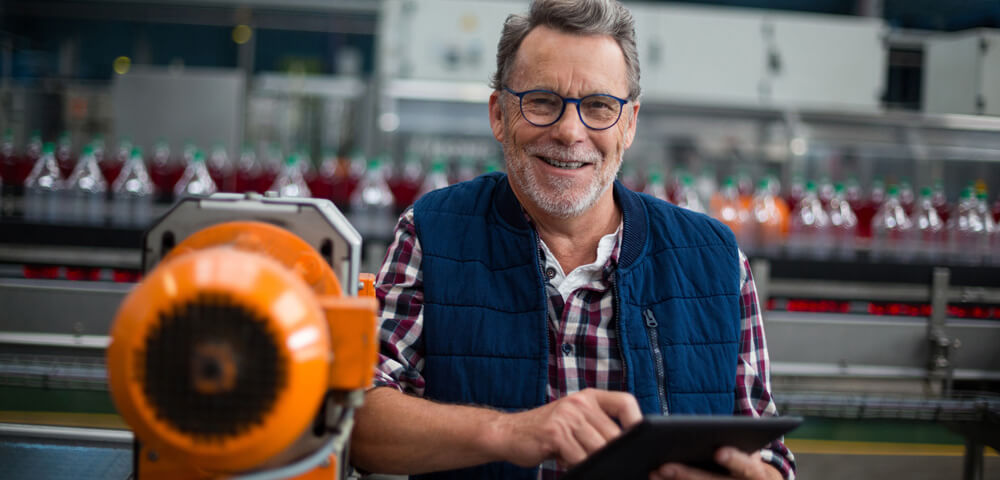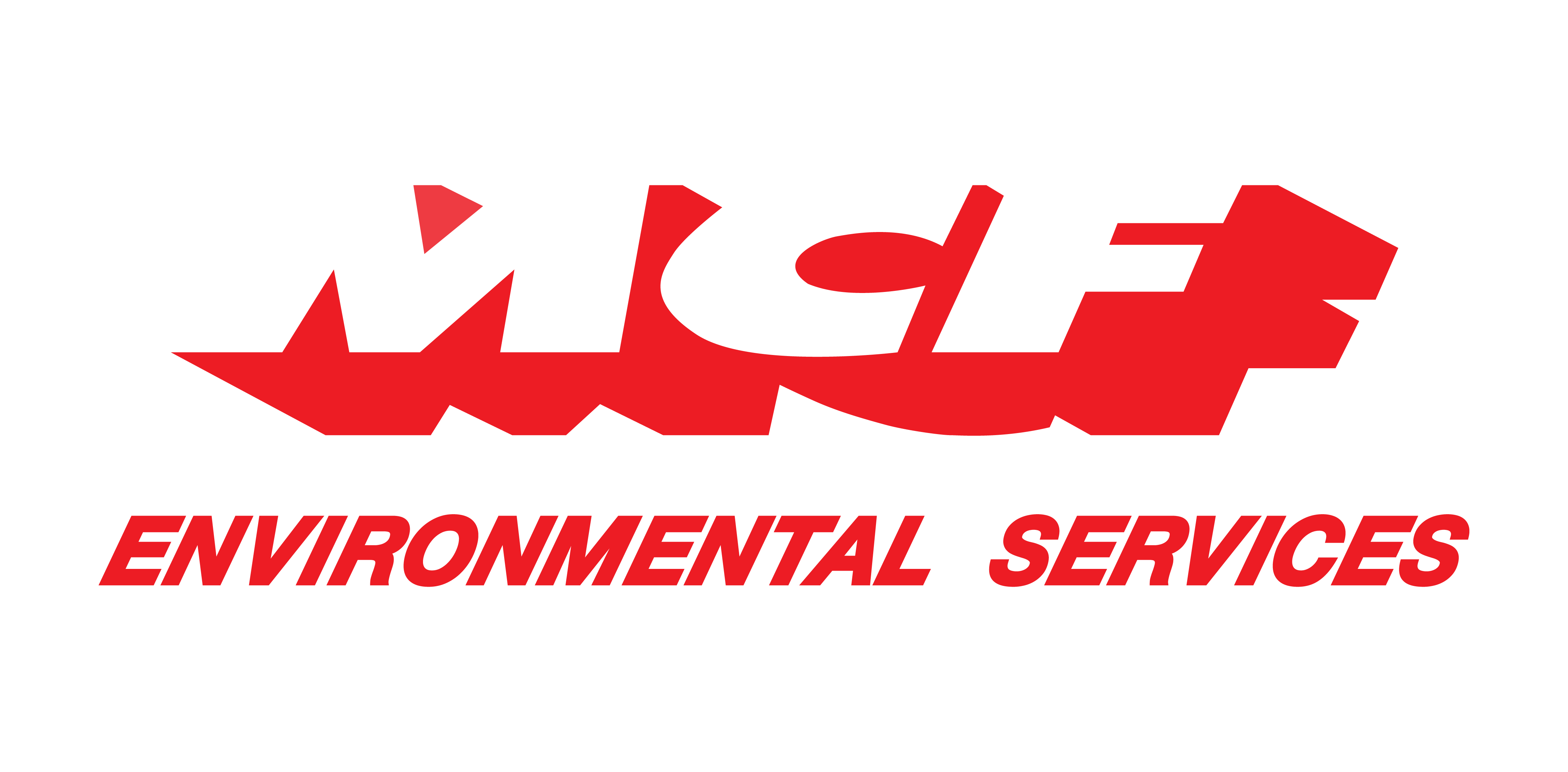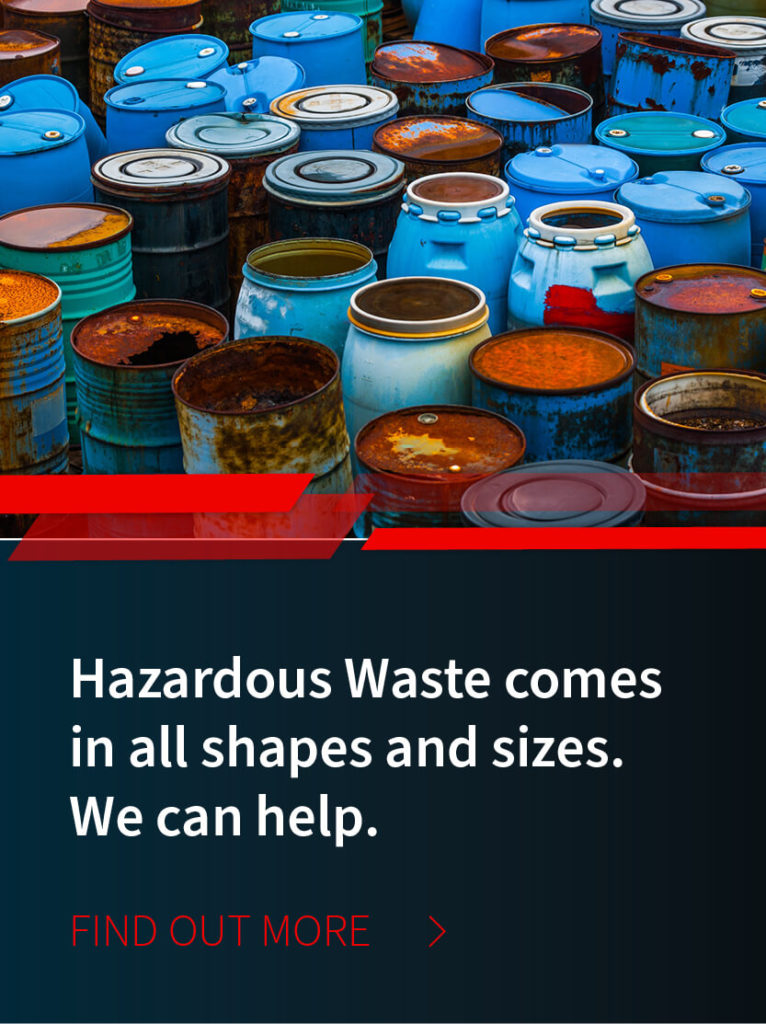
/ IN THIS BLOG
The nuances of this waste flow can be complicated, and one of the most important steps in proper disposal is the accurate identification of all of your hazardous waste. Your manufacturing facility needs to be sure that hazardous waste is being correctly identified in order to ensure you’re following the regulations for disposing of this waste. Not only does this help your facility protect the environment and the community, but it also safeguards your organization from costly fines and penalties which can be incurred due to improper disposal.
This all probably sounds reasonable and logical, but for staff who are not waste experts, proper identification can become quite complicated. With this in mind, here are some strategies to help ensure the process remains accurate and compliant.
01 / Tips for Identifying Hazardous Waste
Here are some suggestions for helping your facility properly identify hazardous waste which may be generated.
Ensure You Are Well-Informed About Hazardous Waste Regulations
The foundation of accurate identification begins with understanding the current definition of hazardous waste and the Resource Conservation and Recovery Act (RCRA) of 1976. This Act contains a number of rules concerning how hazardous material and solid waste is to be disposed of. The rules specify the disposal procedures for materials, such as harmful metals, as well as flammable, corrosive, and reactive materials. In order to follow the rules in this Act, manufacturing facilities must be able to identify the hazardous waste in their facilities.
Identify Hazardous Materials During the Purchasing Process
One way your manufacturing facility can make the hazardous waste disposal process easier and more efficient is to identify materials your company purchases. This is not always easy since it requires you to find out everything your company is purchasing and then determine if it is hazardous. But, once you find out what is being purchased, you can use supplied safety data sheets (SDS) to determine the type of material and subsequently, whether it is hazardous or not.
The SDS contains information, such as the properties of the chemical, protection measures that should be taken, and safety precautions for handling, storing, and transporting the chemical, along with other information. All chemicals must have an SDS in order to be in compliance with the Occupational Safety and Health Administration (OSHA) requirements. Once your facility purchases hazardous materials, any materials remaining after the manufacturing process are considered hazardous waste.
Understand Your Facility’s Manufacturing Process
Another step you can take to help correctly identify the waste your facility generates is to become familiar with its manufacturing process. Sometimes, the manufacturing process can change the chemical composition of the materials your facility purchased. In some cases, non-hazardous material can actually become hazardous. So, it is vital for staff to be familiar with your company’s manufacturing process so that you can correctly identify any hazardous waste before disposing of it.
Get Additional Help in the Waste Identification Process
Manufacturing facilities need to understand the information provided on an SDS in order to be able to identify the types of hazardous waste they generate and properly dispose of it. But, for some facilities, this can be difficult.
If your facility is having trouble understanding and using the information provided on SDSs, you could take the extra step of obtaining lab testing. A lab will be able to identify the material and tell you about any possibly hazardous components in the material. However, it is essential for your manufacturing facility to use a laboratory that has the ability to handle the sample you provide and gives you back a useful report. It’s important to note this can be a lengthy process and add additional costs and legwork to this process.
An easier, more time efficient and cost-effective alternative is to seek the help of a trained waste professional vendor. A hazardous waste disposal company can help your facility identify hazardous waste and properly dispose of it too. It’s important to carefully choose the waste disposal company you will be working with however, because ultimately you will be responsible for the end result of their disposal (remember you’re responsible for this hazardous waste from cradle to grave).
Not all disposal companies will help you with the identification process, but this is a key component of a full-service hazardous waste vendor. It’s also a sign of their capabilities and expertise. Be sure to select a waste management company that will help you with both the identification and waste disposal process. Additionally, it is always important to check that the company has experience handling the kind of waste your facility generates and has the necessary permits and insurance.
02 / MCF Environmental Can Help You with Identification and Disposal of Hazardous Waste
As you can see, it’s crucial to select an experienced waste management company who can be your guide, helping to ensure your manufacturing facility identifies and disposes of its hazardous waste in a way that complies with all relevant regulations. MCF Environmental has the reputation and credentials to be your trusted hazardous waste disposal partner. From accurate identification to responsible and compliant disposal, you can trust MCF Environmental to fulfill your hazardous waste disposal needs. Want more information about the identification of hazardous waste? Reach out to a waste expert at MCF Environmental Services. We’re happy to help!
Robert Losurdo
President, COO








